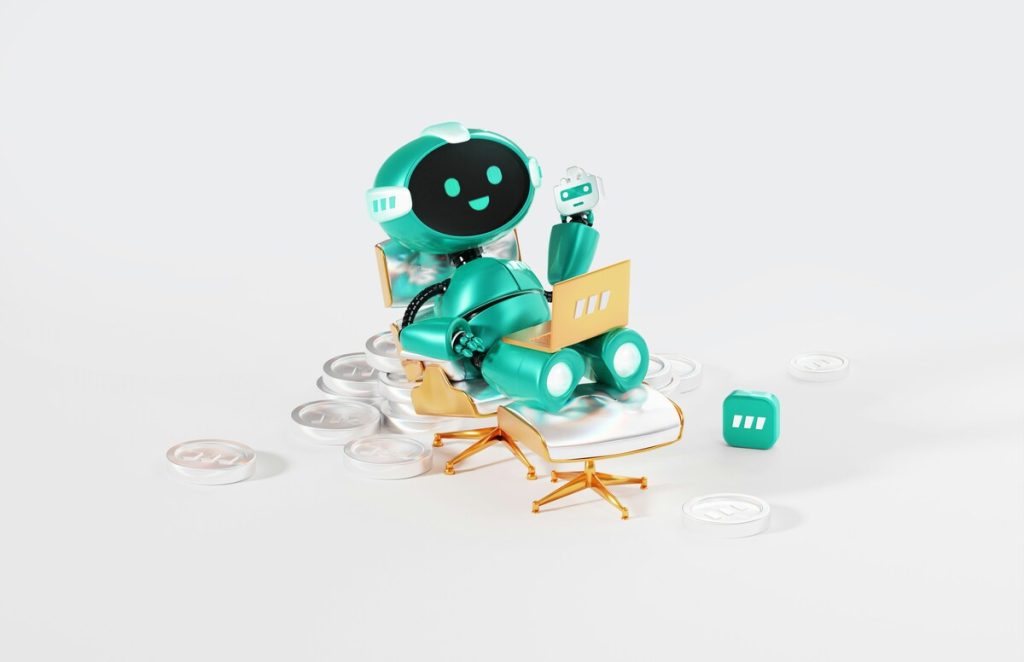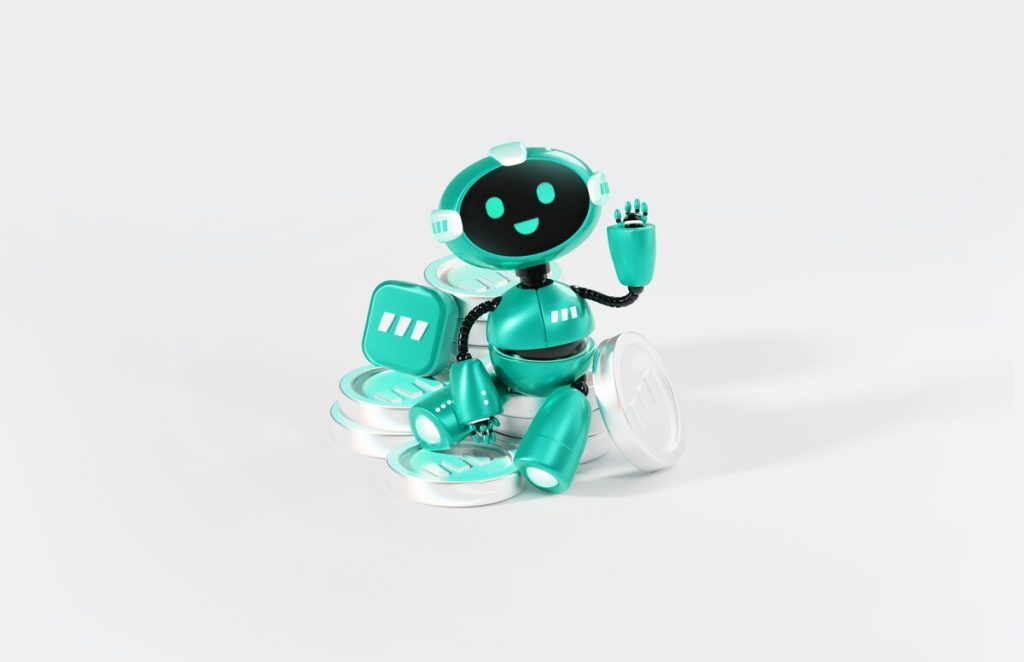Social Media Chatbots: What They Are, How to Use Them, and Why They Matter

Social media chatbots have become a go-to tool for brands that want to stay available, helpful, and interactive around the clock. Whether they’re answering product questions on Messenger or sending a welcome message on Instagram, these bots help businesses keep the conversation going even when the team’s offline.
Here’s everything you need to know about chatbots, from what they are to how to use them in your social media strategy.
What Is a Social Media Chatbot?
A social media chatbot is an automated tool that communicates with users on platforms like Facebook Messenger, Instagram, WhatsApp, and X (formerly Twitter). Unlike basic bots that just schedule posts or follow accounts, chatbots are designed for real-time conversations.
Most chatbots use AI and natural language processing (NLP) to understand messages, respond in a way that feels human, and help people complete tasks without needing a person on the other end. That could mean answering common questions, guiding someone through a product catalog, collecting contact info, or even helping with checkout.
How Chatbots Fit into Social Media Marketing
Chatbots play a big role in modern social media marketing.They’re a key part of conversational marketing, which focuses on creating real-time, two-way interactions with your audience. Whether you want to boost engagement, generate leads, or make customer support smoother, chatbots can help your brand have meaningful conversations that guide users through their journey.
- Customer Support: Respond instantly to FAQs, troubleshoot simple issues, or route users to a human agent when needed.
- Lead Generation: Ask for user details and offer something in return, like a free download, discount code, or entry into a giveaway.
- Driving Sales: Help users choose products, answer questions about sizing or features, and walk them through checkout.
- Building Brand Awareness: Use welcome messages or mini storylines to introduce your brand and show off your personality.
- Interactive Content: Try quizzes, product recommendation tools, or simple games that keep users engaged while gathering useful data.
To get the most from your chatbot, it’s helpful to map out where it can have the biggest impact. That could be on your product page, during customer onboarding, or through your Instagram DMs.

Pros and Cons of Using Chatbots on Social Media
Like any tool, social media chatbots come with both advantages and tradeoffs. Here’s a breakdown to help you decide if they make sense for your business.
The Benefits
Chatbots can take a lot of pressure off your team and improve the customer experience at the same time. Here’s what they do well:
- Always Available: Your chatbot can respond anytime, which means no one has to wait for office hours to get help.
- Saves Time and Resources: Automating repetitive tasks reduces the workload on your team and keeps things running smoothly.
- More Personalized Experiences: Chatbots can use customer data to tailor their replies and make interactions feel more relevant.
- Fast and Consistent Replies: Bots can reply instantly and stay on message, no matter how many people are reaching out at once.
- Helpful Insights: Every conversation can reveal something new about what your audience wants or needs.
The Drawbacks of Social Media Chatbots
While chatbots can do a lot, they aren’t a substitute for real human connection. Here are some of the challenges to keep in mind:
- Lacks Human Emotion: Bots can’t always deliver warmth or empathy, which can make conversations feel flat.
- Misunderstood Messages: AI sometimes struggles with context or tone, leading to confusing replies.
- Less Personal Feel: If you rely too heavily on automation, users might miss the human touch.
- Repetitive Responses: Without regular updates, chatbot replies can start to feel too predictable.
- Ongoing Maintenance: Chatbots need to be reviewed and improved over time to stay useful.
How to Build a Social Media Chatbot Strategy That Works
Adding a chatbot to your social media plan isn’t something you want to do randomly. It works best when you’ve got a clear strategy.
Here are the steps to create one:
1. Set Clear Goals
Start by figuring out what you want the chatbot to do. The more focused your goals are, the easier it is to design the right experience and measure whether it’s working. Avoid vague objectives like “boost engagement” and aim for something concrete.
Examples:
- Collect 100 new leads from Instagram DMs over the next 30 days
- Reduce average response time for support questions by 40%
- Increase product recommendation conversions by 15% during sales campaigns
Think in terms of outcomes. Are you trying to drive conversions, answer support questions, qualify leads, or guide users toward a download or form? Defining this early helps shape every part of your chatbot experience.
2. Understand Your Audience
A successful chatbot is designed with your audience in mind. Take time to understand who your users are and what they need when they interact with your brand. This includes:
- Demographics (age, location, language)
- Behavior (how they interact with your content or products)
- Stage in the funnel (awareness, consideration, decision)
Someone just discovering your brand may need a friendly intro, while a returning visitor might appreciate a promo code or quick answers about shipping. Tailoring your chatbot’s tone, questions, and call-to-action based on this context can make conversations feel much more relevant.
3. Choose the Right Platforms
Your chatbot doesn’t need to live everywhere. In fact, trying to be on every platform can spread your efforts too thin and lead to disappointing results. Instead, focus on where your audience already spends their time and how they prefer to interact with your brand.
Think about what your chatbot is meant to do. Is it there to provide customer support? Capture leads? Send out updates or promotions? The answers will help guide your platform choices.
Popular platform options include:
- Facebook Messenger: A solid option for customer support, order updates, and appointment scheduling. It’s familiar to most users and easy to integrate with your existing Facebook Page.
- Instagram: Perfect for quick replies to DMs, automating responses to story mentions or post comments, and guiding followers to product pages or forms. Great if visuals are a big part of your brand.
- WhatsApp: Best for more personal or direct communication, such as sending reminders, alerts, or order confirmations. It’s widely used in many regions as a go-to messaging app.
- SMS and Web Chat: SMS works well for time-sensitive updates or follow-ups, while live chat on your website is ideal for capturing leads or answering questions in real-time.
Make sure the platform matches both your customer behavior and your internal resources. If your audience hangs out on Instagram but your chatbot is only active on Messenger, there’s a clear disconnect. On the flip side, launching on a platform where your audience barely shows up won’t move the needle either.
Start with one or two platforms that show the most potential, then expand as needed. A well-placed chatbot is far more valuable than one that’s everywhere but underused.
4. Pick a Social Media Chatbot Tool That Fits Your Needs
Not all chatbot tools are the same. Look for a platform that works well with your existing tools and matches your comfort level. Check for things like customization, analytics, integrations, and ease of use. Some popular social media chatbot platforms are:
ManyChat
Best for: Facebook Messenger, Instagram, WhatsApp, SMS, and email
ManyChat is a go-to platform for businesses running chat-based marketing campaigns. It comes with a visual drag-and-drop builder, so you can create automated conversations, tag user behavior, and collect contact info without needing to code. The tool supports multiple channels including Messenger, Instagram, WhatsApp, SMS, and email. It also offers features like comment automation, QR code generation, and shareable landing page links. With options to segment users, send targeted broadcasts, and use AI for things like intent detection or smart replies, it’s a strong choice for growing your audience and staying connected.
ChatPion
Best for: Facebook Messenger and Instagram DMs
ChatPion is focused on automating private message conversations, mainly on Facebook and Instagram. It gives you tools like a flow builder, automatic replies to DMs and comments, and even built-in ecommerce features like payment processing inside the chat. If your main goal is to respond quickly to customer questions or sell directly through messaging, ChatPion keeps things simple and efficient without the extra noise of a full social media suite.
Botsify
Best for: Facebook Messenger, Instagram, WhatsApp, Telegram, and SMS
Botsify supports a wide variety of messaging apps and is designed to help teams automate customer support and lead generation. You can gather user info, qualify leads, and transfer chats to a live agent when needed. It also connects with tools like CRMs or LMS platforms and includes pre-built templates and AI features to make your chats more personal and effective.
Chatfuel
Best for: Facebook Messenger, Instagram, WhatsApp, and website chat
Chatfuel is a user-friendly platform that lets you build Messenger bots using a drag-and-drop interface. It now goes beyond Messenger, with support for Instagram, WhatsApp, and live chat widgets you can embed on your website. The platform includes AI features like ChatGPT integration, keyword-based automation, and advanced audience segmentation. You can manage all conversations from one inbox, set up ecommerce flows like cart reminders, and track results with built-in analytics and A/B testing.
5. Build Simple, Helpful Conversations
Your chatbot should sound natural and make it easy for users to get what they need. Use short replies, clear directions, and anticipate common follow-up questions. You can use templates or create custom flows that match your specific goals.
6. Follow Best Practices for Social Media Chatbots
Once your chatbot is up and running, how you manage it makes all the difference. These tips will help you create a smoother, more helpful experience for your audience:
- Be Transparent: Let people know they’re chatting with a bot. This sets expectations and avoids confusion.
- Offer Human Support: Not everything can (or should) be handled by automation. Give people an easy way to reach a real person when needed, especially for detailed questions or sensitive issues.
- Personalize when Possible: Include names, past purchases, or known preferences to make replies feel more tailored.
- Keep Content Fresh: Update replies and flows regularly based on feedback and new campaigns.
- Test What Works: Try different greetings, question formats, or response styles and see what gets better results.
7. Review and Improve
Once your chatbot is live, it’s time to measure how well it’s performing.
Here are the most helpful metrics to track:
- Goal Completion Rate (GCR): Shows how many users complete the intended action, like booking a demo or finishing a purchase.
- Total Interactions: Counts how many chats or messages your bot handles. Useful for tracking reach and engagement.
- Average Chat Duration: Measures how long users interact per session. Short chats may mean quick help or early exits, while long ones could suggest confusion or high interest.
- Engagement Rate: The percentage of users who actually interact with your chatbot after seeing a prompt or message.
- Bounce Rate: Tells you how many users leave the chat without engaging or finishing a task. High rates might point to poor timing or irrelevant messaging.
- Human Handoff Rate: Tracks how many conversations are passed on to a human agent. A lower number can mean your chatbot is doing its job well.
- Customer Satisfaction Score (CSAT): Direct feedback from users about their chatbot experience. Helps you gauge overall sentiment.
- Retention Rate: Measures how many people return to use the chatbot again. High retention usually means it’s offering real value.
- Fallback Rate or Missed Utterances: Indicates how often your chatbot fails to understand the user. Helpful for improving language recognition and accuracy.
- Conversion Rate: The percentage of users who take a desired action after chatting, like signing up or buying something.
- Leads Captured: Tracks how many users leave their contact details through the chatbot.
- Bot Automation Score: Measures how many conversations the bot handles without human help.
- Response Accuracy: The percentage of responses that were correct and helpful based on the user’s question.
- Feedback Sentiment: Compare positive and negative feedback to get a better sense of how users feel about the interaction.
Start by matching your metrics to your chatbot’s purpose. For customer service, focus on human handoff rate, fallback rate, and CSAT. For lead generation, look at engagement, conversion rate, and leads captured. If your goal is sales, prioritize goal completion rate and average chat duration.

Extra Tips for Social Media Chatbot Success
Chatbots are more than just tools for automation. They’re part of your brand voice and can play a big role in the customer experience. These extra tips will help you build a chatbot that’s effective and feels like a natural extension of your business.
Match the Tone to Your Brand
Your chatbot should sound like your brand. If your voice is friendly and casual, keep it that way in your messages. If your tone is more professional, stick to that. It’s also important to read the room. A playful voice is fine for product discovery, but a more calm and empathetic tone works better during customer complaints. Writing out a few guidelines or examples can help keep things consistent across your team.
Be Clear About Data and Privacy
Let users know what data you collect and how you use it. Add a short note or link to your privacy policy inside the chatbot so it’s easy to find. Make sure your data practices follow laws like GDPR or CCPA. When people know what to expect, they’re more likely to engage.
Support More Than One Language If Needed
If your business serves people in different regions, language support can make a big difference. Look for chatbot platforms that include multilingual options or can be connected with translation tools. It’s also worth adjusting your content for local customs and preferences, not just the language.
Connect Your Chatbot to Your Other Tools
When your chatbot works alongside tools like your CRM or email platform, you can create smoother workflows. This setup allows you to send follow-up emails, log customer data automatically, or trigger campaigns based on what someone said in the chat. It helps create a more connected experience for users and gives you better insights.
Bring It All Together: Chabots with Your Social Media Strategy
A social media chatbot can play an important role in your overall social media marketing strategy, but it’s just one piece of the puzzle. Tools like Metricool help you plan and schedule your content while providing detailed analytics to track your performance. When you combine Metricool’s insights with a chatbot that handles conversations and engagement, you get a clearer view of how all parts of your strategy work together. This way, you can make smarter decisions and create a more connected experience for your audience.

